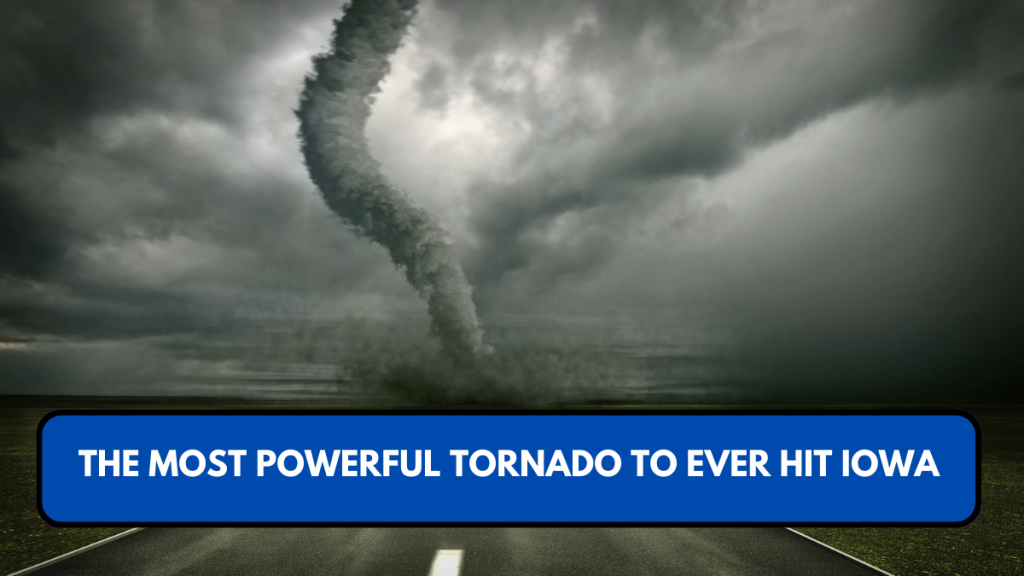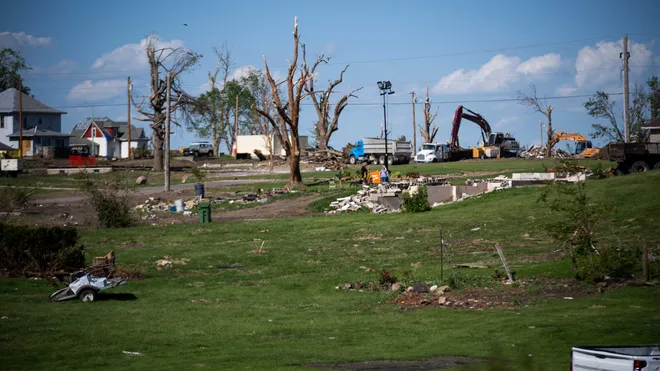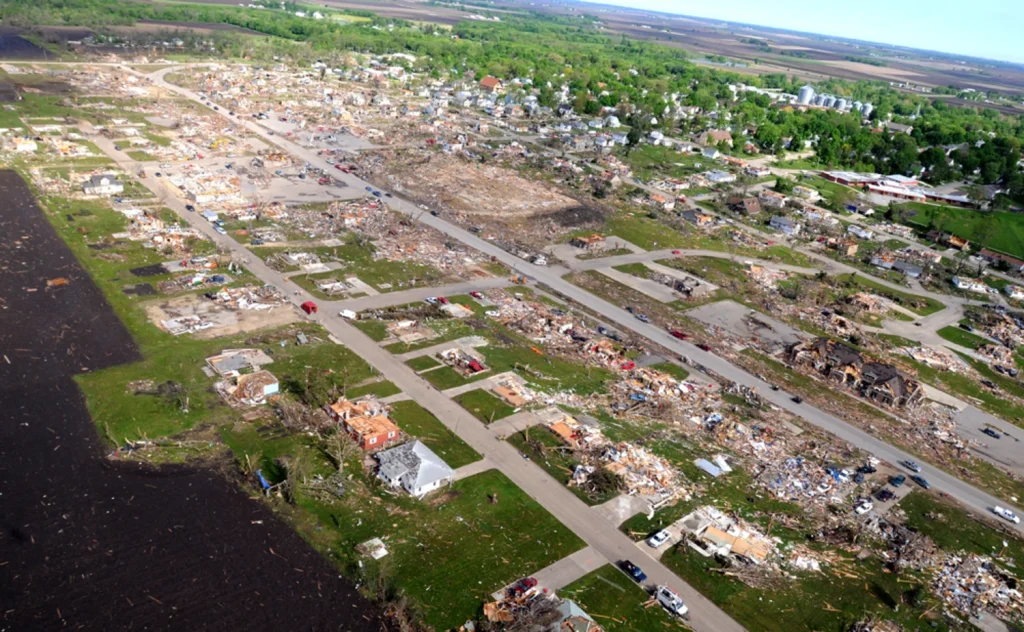
Iowa, known for its sweeping plains and agricultural heartland, is no stranger to powerful storms. But when it comes to tornadoes, a few have etched themselves into history—leaving behind scars that time and memory struggle to erase. Among them, three tornadoes stand out for their sheer intensity, destruction, and lasting impact on communities: the 1968 Charles City F5, the 2008 Parkersburg EF5, and the 2024 Greenfield EF4.
The 1968 Charles City F5 Tornado: A Town Torn Apart
On May 15, 1968, Charles City in northern Iowa experienced the most powerful tornado to ever strike the state—an F5-rated twister on the original Fujita scale. The storm ripped through the town with winds exceeding 260 mph, carving a path of devastation that left 13 people dead and 462 injured.
The tornado demolished 256 businesses and 1,250 homes, displacing hundreds. Damages were estimated at more than $20 million at the time—over $170 million today when adjusted for inflation. The city’s business district was nearly leveled, and debris from the tornado was found miles away.
The National Weather Service (NWS) recognizes this event as one of the most catastrophic tornadoes in Iowa’s history. You can learn more about the 1968 Charles City tornado on the NWS La Crosse website.
The 2008 Parkersburg-New Hartford EF5 Tornado: A Modern Disaster

Fast forward 40 years, and Iowa was again struck by nature’s fury. On May 25, 2008, an EF5 tornado—the most severe classification on the Enhanced Fujita scale—hit Parkersburg and New Hartford, small towns located in northeast Iowa.
The tornado carved a path over 43 miles, with peak winds of over 205 mph. Nine people lost their lives, and dozens were injured. Nearly 300 homes were destroyed in Parkersburg alone. The tornado caused more than $75 million in damage and was part of a larger outbreak that spawned several other tornadoes across the Midwest.
This storm was notable not just for its intensity, but for how quickly it developed. Warnings from the National Weather Service came just minutes before impact, reinforcing the importance of modern alert systems and preparedness. Details on the 2008 tornado are available on Wikipedia.
The 2024 Greenfield Tornado: Record-Breaking Wind Speeds
The most recent tornado of historic significance hit Greenfield, Iowa, on May 21, 2024. Rated an EF4, this tornado was part of a violent outbreak across the Midwest. It caused the deaths of five people and injured at least 35 others.
What made this tornado remarkable wasn’t just the destruction, but the wind speeds recorded by research teams. Scientists with the University of Illinois and Texas Tech University found winds as high as 290 mph just 144 feet above ground—some of the highest wind speeds ever recorded in a tornado.
Despite not being classified as an EF5—because wind measurements must reflect surface-level damage—the data suggests this tornado could rival any of the most powerful on record. A detailed investigation is still ongoing.
More about this event can be found in the Greenfield Tornado Summary.
Understanding the EF Scale
Tornadoes in the U.S. are rated using the Enhanced Fujita (EF) Scale, which estimates wind speeds based on damage:
- EF0: 65–85 mph (light damage)
- EF1: 86–110 mph (moderate damage)
- EF2: 111–135 mph (considerable damage)
- EF3: 136–165 mph (severe damage)
- EF4: 166–200 mph (devastating damage)
- EF5: Over 200 mph (incredible damage)
EF5 tornadoes are rare but represent the most violent type of storm known to man. Iowa has recorded two EF5 tornadoes since the EF scale was introduced in 2007, but older F5s remain part of its deadly legacy.
For detailed information on tornado classification, visit the NOAA Storm Prediction Center.
Tornado Preparedness and Safety

Iowa averages around 50 tornadoes annually, mostly in spring and early summer. With modern warning systems, fatalities have decreased—but the danger remains.
The Iowa Department of Homeland Security and Emergency Management encourages residents to have an emergency plan, keep a weather radio, and pay attention to tornado watches and warnings. Visit the Iowa HSEMD site for more safety tips.
Additionally, the National Weather Service provides real-time tornado warnings and preparedness guides at weather.gov/safety/tornado.
Conclusion: Nature’s Unforgiving Power
While Iowa’s fields may seem calm and serene, the skies above can quickly turn deadly. The Charles City F5, the Parkersburg EF5, and the Greenfield EF4 each remind us of the tremendous power of tornadoes—and the resilience of the communities that rebuild in their aftermath.
Whether through improved forecasting or stronger infrastructure, Iowa continues to adapt in the face of natural disasters. But the stories of these storms serve as a sobering reminder: when the sirens sound, every second counts.



